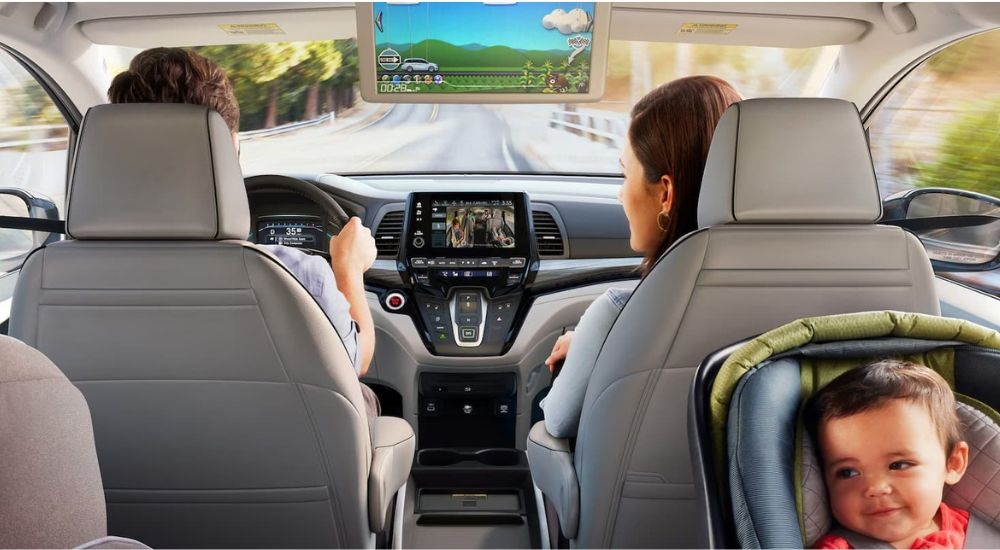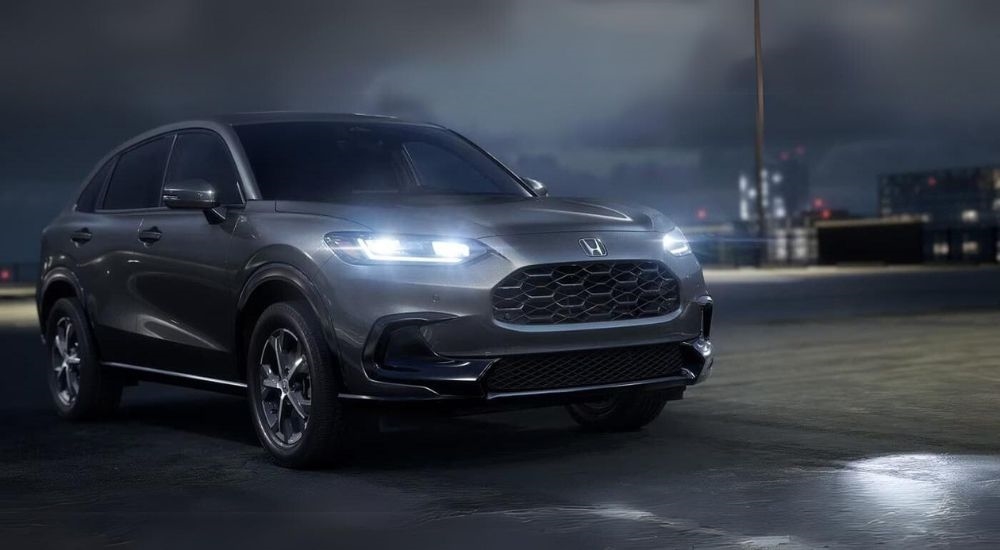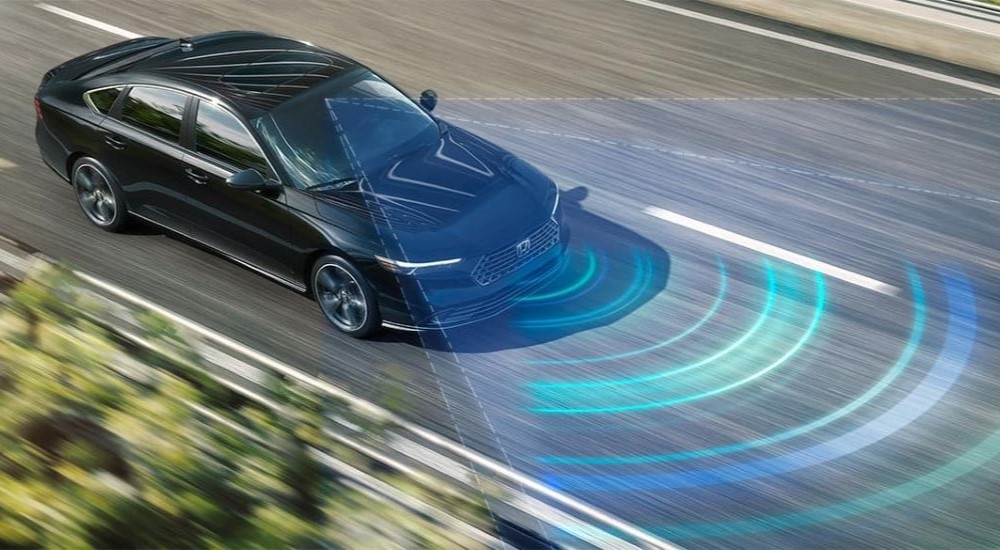If you've been shopping for a new car any time recently, you've probably heard of "driver assistance technology." These high-tech features use a combination of sensors, warnings, and automated actions to prevent accidents caused by human error on the road. Even if you're a very careful driver, we all get distracted now and then, especially when the weather gets bad and traffic patterns get less predictable. Driver-assist features put an extra layer of protection around you and your passengers so you can confidently drive in even the trickiest situations.
On Honda vehicles, these features are bundled together in the Honda Sensing suite. You may be aware that Honda Sensing features are standard on all trims of the 2023 Ridgeline, Accord, and Passport and the 2024 Civic, HR-V, CR-V, Pilot, and Odyssey, but did you know that you can also find these modern features on vehicles at a used Honda dealership? Honda has been on the cutting edge of safety tech for years, which means models like the 2020 Civic, 2020 CR-V, and 2021 Odyssey come standard with Honda Sensing technology. You can also find these features on even older models by opting for top-tier trim levels with extras like heated seats and sunroofs.
Included Honda Sensing features can differ from vehicle to vehicle depending on its model, year, and trim level. But here at Hudson Honda, we make it easy to find used Honda vehicles with the exact features you're looking for. You can browse our inventory here on our website and find cars, SUVs, and more that fit your needs and budget. When looking at the details of a particular vehicle, all you have to do is click on the Safety tab to see all of the features included in that particular model.
Of course, that information is only useful if you know what the driver assistance terms actually mean. So today, we will give you a crash course in the Honda Sensing suite. Once you look through this guide, you'll know what you're getting when you pick a model that comes with driver assistance tech.
The Collision Mitigation Braking System
When driving on a busy highway, collisions are unfortunately common. Relying on your instincts alone can be tricky when the vehicle ahead of you comes to a sudden stop. The Collision Mitigation Braking System uses a monocular camera to determine that a forward collision is about to happen. If there's still time for you to act, you'll get an alert letting you know that you need to apply the brakes. If you don't brake in time or don't brake hard enough, automatic emergency braking will kick in to help you avoid an accident. In addition to other vehicles, the system can also sense pedestrians.
The Road Departure Mitigation System
The same camera that the Collision Mitigation Braking System uses can also detect the lines that define lanes on the road. If you start to drift out of your lane, you'll get a warning, and if you don't respond, then gentle corrective steering will put you back on track. This feature can be customized to suit your style of driving by utilizing a variety of modes:
- Normal Mode: this activates the steering assist and the steering wheel vibration or audible warning together.
- Wide Mode: this will activate steering wheel vibration and audible warning before steering assist is utilized.
- Narrow Mode: steering assist will be activated before the steering wheel vibration and audible warning.
- Warn Only Mode: activates just the steering wheel vibration and audible warning.
 Adaptive Cruise Control
Adaptive Cruise Control
With a traditional cruise control system, you set a particular speed, and your vehicle will maintain it no matter what. This can be jarring when traffic ahead of you suddenly slows down. Adaptive Cruise Control still lets you set your desired speed, but you can also set a preferred following distance between you and the vehicle in front of you. If the coast is clear, you'll cruise along at your set speed. But once you get too close to another car, the system will automatically slow down or come to a stop if necessary. When traffic picks back up, the system will gradually speed back up until it reaches your set speed.
Traffic Sign Recognition
Sometimes, weather conditions or distractions on the road make it difficult to see speed limit signs, which can be few and far between on some streets. This can make it hard to know how fast you should be driving, especially if there aren't any other vehicles around. Traffic Sign Recognition solves this problem by recognizing these signs and displaying them on the instrument panel so you can check the current speed limit at a glance.
Driver Attention Monitor
It's common knowledge that you shouldn't drive while tired or distracted, but life is messy and complicated. Sometimes, you feel fine at the start of a drive but lose focus before you reach your destination. The driver attention monitor uses a variety of inputs to determine whether you've become tired or distracted. If so, the system will give you a warning and recommend that you focus up or pull over for a coffee break so that you can give your drive the attention required to stay safe.
Blind Spot Information System
Every vehicle has a blind spot, which can be dangerous when switching lanes on a busy highway. But if your vehicle has a blind spot information system, like many of those on the lot of your local Honda dealership, you can tell whether or not your blind spot is occupied by glancing at your side view mirror, where an icon will light up if a vehicle is in your blind spot. If you activate your turn signal while the blind spot is occupied, you'll get an audible warning to make sure to wait until it's safe to merge.
Cross Traffic Monitor
Not all accidents happen at high speeds on busy streets. Parking lots can be dangerous, too. Cross Traffic Monitor activates when you're in reverse, watching for vehicles coming from either side and giving you a warning if one gets too close. That way, you have an extra tool, in addition to the rearview camera, when backing out of a parking spot.
Automatic High-Beam Headlights
Things can get tricky when it's dark enough that you need your high-beam headlights. You want to get the best visibility possible to stay aware of your surroundings, but you need to turn your brights down when other cars are around so you don't daze the drivers around you. Auto High-Beam Headlights take care of this work for you, automatically switching between the high beams and low beams based on surrounding conditions so you can focus on driving.
Safety Comes Standard on a Honda
Looking at this long list of features might feel overwhelming. But in the long run, a comprehensive suite of driver assistance tech makes your driving life less complicated because you'll have a variety of automated systems to help you stay safe on the road. And remember, you don't have to do this alone. Contact us for assistance! Our team here at Hudson Honda is ready to listen to your needs and recommend models that will work for you.
If you're shopping for a family car or a used model for your teen driver, you'll probably want to prioritize safety tech above all else. In other situations, you might be okay with foregoing some of the optional features. One easy trick is to write down two lists: features you want and features you need. That way, you can keep this information close at hand while browsing. No matter which model you go with, you can rest assured that every Honda on our lot, new or used, is a safe and reliable vehicle that's sure to serve you well.


